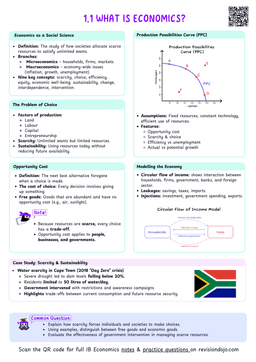Economic growth has further consequences than expanding real output, including:
- Impact on living standards.
- Impact on the environment.
- Impact on income distribution.
Impact on living standards
Economic growth can lead to higher incomes and improved access to goods and services, ultimately raising living standards. This occurs because:
- GDP per capita increases: if economic growth occurs at a faster rate than population growth, people have higher average income levels.
- Higher consumption of goods and services: people can afford better healthcare, education, and housing, improving quality of life.
Factors affecting the impact of economic growth on living standards
The extent to which economic growth improves living standards depends on:
- Distribution of income: growth benefits all groups if income is equitably distributed, but worsens inequality if concentrated among the wealthy.
- Household spending: economic growth increases consumer spending, which drives demand for more goods and services, stimulating further growth.
- Government spending on merit goods: if growth occurs by an increase in government spending (G) living standards will increase if the government spending is directed in public goods like education, healthcare, and infrastructure.
Growth alone does not automatically improve living standards.
Effective policies must accompany economic growth to ensure efficient resource allocation and inclusive development.
Impact on the environment
Economic growth often comes at an environmental cost, as increased production leads to higher resource consumption and depletion. This is usually driven by unsustainable resource use:
- Rapid industrial expansion can lead to over-extraction of natural resources, threatening future economic stability.
- The "grow now, clean later" approach argues that prioritising growth first and dealing with environmental damage later is preferable, as environmental regulation may slow economic expansion.


